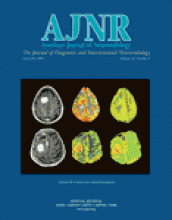In their article in this issue of the AJNR, Yang et al very nicely present their data analyzing dynamic perfusion curves and permeability between intra- and extravascular compartments, to determine whether this information can be used to differentiate typical from atypical meningiomas. Specifically, permeability quantitatively assessed and expressed as the volume transfer constant is increased, because of capillary leakiness, among other factors, that is more commonly found in atypical meningiomas. Thus, the authors propose that the volume transfer constant, as opposed to cerebral blood volume, can be used to distinguish atypical from typical meningiomas, which presumably should have some value to the surgeon, as well as the neurooncologist, following the resection. Thus, this serves as a potentially useful surrogate marker, unlike anatomical MR images, to alert the surgeon to the fact that the lesion they are about to operate on may behave differently than the typical meningioma. The real question is whether this makes a difference to the surgeon.
One very important component of the presurgical planning is to make some assessment regarding the vascularity of the lesion with regard to its feeding arteries. In the typical convexity meningioma, interventional techniques to embolize these feeders can be exceedingly helpful before surgery. As surgeons, we once believed that this had to be done immediately before the resection, but we now know this is not the case and have found that delayed surgery after embolization, of as much as a week or 10 days, can actually soften the tumor and continue to reduce the blood supply to the point where it affects the need for postoperative transfusion. Thus, the concept of preoperative embolization is an important one and would be made regardless of the finding on perfusion imaging to detect a change in vascular permeability. Embolization is preferred in all meningiomas preoperatively, although we realize the limitations, especially with meningiomas at the skull base that often are not amenable to any significant degree of embolization. Another factor that influences the surgeon in the preoperative phase of assessing a patient with a presumed meningioma is whether in an asymptomatic situation, in which the tumor is small and discovered by serendipity, the lesion needs to be removed. It is becoming more frequent to see patients presenting with small meningiomas having had scans for other reasons. In this setting, the knowledge that the tumor is more likely atypical, based on perfusion imaging, would influence a nonconservative approach toward resecting the lesion sooner than later. To this end, the information presented in a study such as this would be most useful and beneficial to the patient.
The goal of the operative procedure is to always achieve a complete, or Simpson grade I, resection. In doing this, one strives to remove at least 1 cm of normal dura around the lesion. Often during surgery, the surrounding dura is hyperemic from a proteinaceous coating due to compressed arachnoid and does not represent tumor invasion. Notwithstanding, we always strive to remove at least 1 cm, if not more, of the surrounding margin during the course of the procedure. This would be true for both atypical and typical meningiomas, and in fact we surgeons do not know whether the degree of peripheral dural resection should be greater in atypical meningiomas and whether it would affect outcome in terms of recurrence. Thus, the bone flap—ie, size of the craniotomy—and strategy to remove a margin of dura would not be affected by knowing the quantitative assessment of vascular permeability. One factor that would be influenced by this information, however, would be the strategy of resecting a normal rim of brain in terms of needing to do this, because these atypical meningiomas can have invasive features into the adjacent brain. This might not be very important in nonfunctional regions, but when atypical meningiomas invade brain in functional regions, such as near the Rolandic cortex or in the dominant hemisphere, functional mapping techniques can be very useful in determining the safety of the procedure. Therefore, the information that could be used preoperatively to predict that the tumor is atypical and has brain invasion would be useful in planning whether or not a functional mapping procedure would be indicated. Once the operation proceeds however, the resection is as one would expect—ie, aggressive and radical—regardless of the pathology. The frozen-section information would not change the overall goal of the operation. In most circumstances, when an atypical meningioma is found, the goal is to watch carefully with serial imaging studies spaced closely together in the postoperative period. If the tumor is incompletely resected, this could influence the desire to treat with conformal radiation or radiosurgery sooner rather than later, and it is in this setting that the pathology ultimately dictates the direction of treatment in the postoperative stages. This is not, however, an important factor to preoperatively influence the surgeon.
In essence, the information provided in this article will be quite useful to surgeons in helping to plan the surgical strategy. Although the ultimate goal—ie, complete or radical resection—will not change, this information could help avoid surprises such as brain invasion that could be successfully planned for if this information were available preoperatively.
- Copyright © American Society of Neuroradiology












